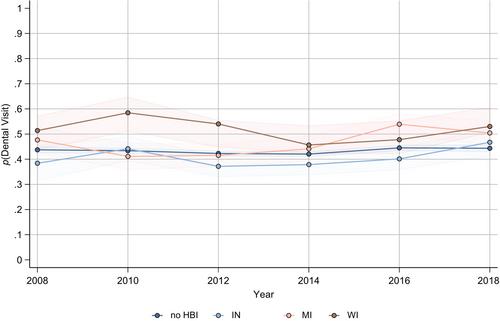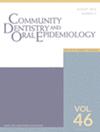Incentivizing dental services in healthy behaviour Medicaid waivers
Abstract
Objective
In the United States, adult dental benefits are optional in the state-managed, public insurance program, Medicaid. States also have the option to adapt their Medicaid program via waivers which pair healthy behaviour incentives (HBI) with cost-sharing. These waivers have proven ineffective, but the empirical evidence has ignored differences between states. This study aims to evaluate the impact of four state's HBI Medicaid waiver on dental visits among low-income adult population subject to incentives and cost-sharing requirements by the HBI waiver.
Methods
Analysing biannual data from the Behavioural Risk Factor Surveillance System's Oral Health module (2008–2018) with a Difference-in-Differences design, this study estimated the effect of a Healthy Behaviour Incentive waiver on the probability of visiting the dentist in the past year. The three states that implemented an HBI Waiver (Indiana, Michigan and Wisconsin) were analysed separately. Secondary outcomes included being uninsured and having all teeth extracted. Matrix Completion methods accounted for dynamic treatment and tested for non-common trends. Inference was based on randomization inference tests.
Results
Only in Michigan was an HBI waiver consistently associated with a significant increase in the probability of a dental visit (Est. = 5.6%-points, p = .01). There was little convincing evidence that HBI waivers were associated with being uninsured or having all teeth extracted.
Conclusions
Between 2010 and 2019, many states have implemented an HBI waiver, each with a different approach to incentivizing dental visits. These implementation differences may explain the heterogeneous effects by state. More work is needed to evaluate how Medicaid waivers impact health outcomes in low-income populations.


 求助内容:
求助内容: 应助结果提醒方式:
应助结果提醒方式:


